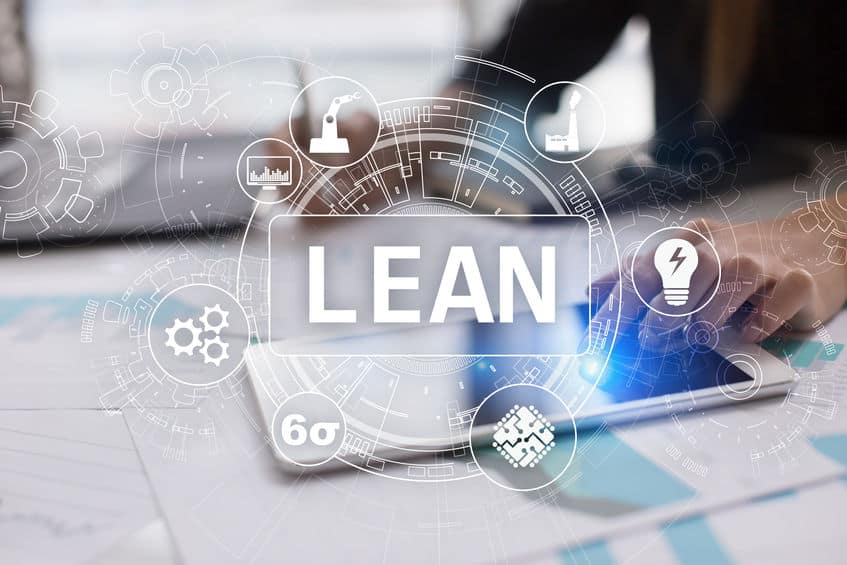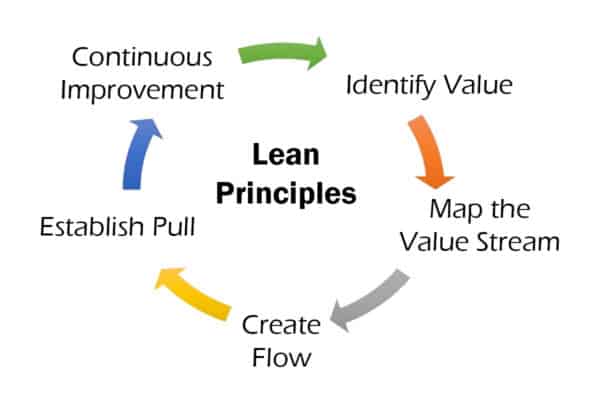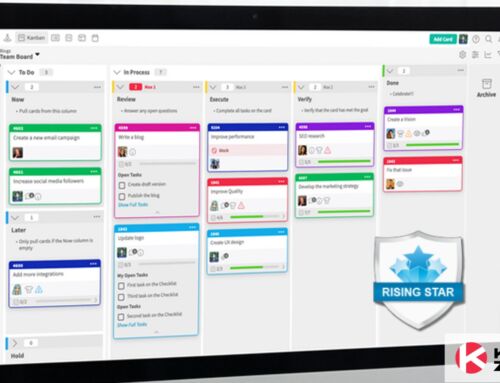
Companies constantly pursue strategies and techniques to gain a competitive advantage and continuously improve their business. Companies look for measures to keep their costs in check, increase their productivity, and improve profitability. One of the most popular concepts that have helped transform companies is lean manufacturing. Let’s explore how Lean manufacturing helps businesses take their game to a whole new level.
What is Lean Manufacturing?
To understand Lean manufacturing, we need to talk about Lean thinking. Lean thinking is a methodology that focuses on optimizing business processes through waste elimination, hence the term, Lean.
Lean manufacturing is rooted in the Lean thinking methodology that started in the automobile industry. Its beginnings started with Henry Ford and his relentless pursuit against waste and inefficiency. He introduced various techniques that helped his employees work smarter. While Ford’s methods worked well to introduce standardization, it didn’t account for handling variation.
This is where Taiichi Ohno of the Japanese automotive giant, Toyota, took Ford’s methods a bit further. Toyota cracked the code and established the Toyota Production System that radically transformed its operations. The Toyota Production System created an ecosystem that allowed the company to control their costs and improve product quality by eliminating waste.
The Five Lean Manufacturing Principles
The Lean methodology, including Lean manufacturing, revolves around five principles.

#1 Identify Value
Lean thinking starts with identifying what is valuable to the customer. All of a company’s efforts and operations should work harmoniously towards delivering customer value. Knowing what value means to your customers will help you design business processes that produce products that your customers will find valuable.
Engage with your customers through surveys, interviews, or feedback forms. Learn what their expectations are of your product or service.
#2 Map out the Value Stream
Knowing what value means for your customers will help you map out your company’s value stream. A value stream is the list of steps and processes performed to create your company’s products or deliver your services. With a clear value stream, it will be easier for you to decide how to improve your workflow.
#3 Create Flow
Once you’ve mapped your value stream, the next thing is to establish flow. With Lean manufacturing, the key to establishing a smooth flow of work is to eliminate waste. With a clear understanding of your value stream, you can identify any bottlenecks and impediments in your process. Eliminating anything that contributes to waste in the process will help you establish a smooth flow.
#4 Establish Pull
With the workflow going as smooth as possible, it’ll be easier for you to establish a pull system. A pull system is a Lean manufacturing concept used to control the flow of work by only replenishing what has been consumed. With a pull system, inventory is kept at a minimum and costs are controlled.
#5 Seek Perfection
Lean thinking is not only focused on reducing waste. One of its two main pillars is continuous improvement. A Lean manufacturing concept called kaizen puts emphasis on incremental improvements to change for the better.
When applying Lean manufacturing, or Lean thinking in general, the goal is to make a lasting positive change. This will only be possible if the company pursues to continuously improve its flow.
Lean Manufacturing Concepts
There are many Lean manufacturing concepts and techniques that companies can use to fully reap the benefits of Lean thinking.
Value Stream Mapping
Value Stream Mapping or VSM is a Lean tool used to document and diagnose a company’s value stream or workflow. It is a visual representation of the flow of materials and information in, within, and out of the process. Whether doing Lean manufacturing or any process review, having a Value Stream Map will benefit your team. Read our Value Stream Mapping resource here to learn more about this useful tool.
Kaizen
Kaizen is another Lean manufacturing concept that can benefit any business. It’s a mindset that becomes ingrained in a company’s work culture. When doing kaizen, employees get involved in creating incremental improvements through kaizen events or kaizen bursts. Learn more about kaizen and how you can use it to introduce a continuous improvement mindset for your team or company.
Kanban
Another Lean manufacturing concept is Kanban. It is also one of the Lean concepts that are widely used outside of the manufacturing industry. Kanban is a visual management tool that enables teams to see how work is flowing through their system. The visual nature of Kanban allows teams to easily see bottlenecks and impediments in their workflow. Because of its highly visual nature, many industries are using Kanban as a project management technique.
Applying Lean Principles and Concepts Beyond Manufacturing
At its core, Lean manufacturing is about waste reduction and continuous improvement. These allow companies to deliver high-quality products and services that provide value to their customers. But Lean thinking is not only confined to manufacturing. Lean principles and concepts are highly transportable and adaptable. We have seen Lean thinking applied to other industries even in farming and the law practice.
Lean principles and concepts can be applied and adapted to other industries and niches. The key is to shift one’s mindset and look at processes through the lens of Lean thinking. Waste elimination, continuous improvement, and an emphasis on respect for people all bring together a complete transformation that throttles companies to level up their game.
Learn to Work Smarter, Not Harder!
Get our top articles weekly.
Table Of Contents
Discover many more posts…







